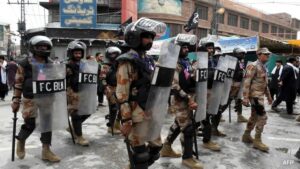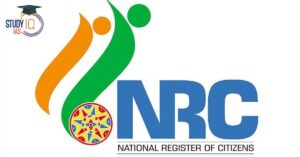Table of Contents
Special Inquiry Committees Of Parliament
Context: The Ethics Committee of the Lok Sabha has suggested the removal of a Member of Parliament from the Trinamool Congress due to allegations of unethical behaviour and violation of privileges.
Ethics Committee Overview
- Initiation of the Ethics Committee: The concept of forming the Ethics Committee in the Indian Parliament originated from a resolution passed during the Presiding Officers Conference held in New Delhi in October 1996.
We’re now on WhatsApp. Click to Join
Ethics Committee in the Lok Sabha
- Establishment Year: It was established in the year 2000.
- Composition: The committee is composed of up to fifteen members, appointed by the Speaker of the Lok Sabha.
- Term Duration: Members serve for a term not exceeding one year.
Ethics Committee in the Rajya Sabha
- Establishment Year: It was formed in 1997.
- Composition: Comprises 10 members, nominated by the Chairman of the Rajya Sabha.
- Term Duration: Members hold office for a term not exceeding one year.
Functions of the Ethics Committees
- Primary Role: The committees are tasked with overseeing the moral and ethical conduct of the Members of Parliament.
- Investigative Function: They examine cases related to ethical misconduct and other inappropriate behaviour of the Members.
- Complaint Process: Complaints regarding the unethical conduct of a member can be submitted to the committee by any individual or member.
- Scope of Examination: Only Members of Parliament are subject to examination for misconduct by the Ethics Committee.
- Definition of ‘Unethical‘: The term ‘unethical’ is not explicitly defined, giving the Committee the discretion to determine what constitutes unethical behaviour.
Privileges Committee’s Role
- Function: Investigates grave allegations against Parliament members.
- Historical Cases:
- In 1951, a special committee found an MP guilty of commercial self-promotion using parliamentary questions.
- The ‘cash for query’ scandal in 2005 led to the expulsion recommendation of 10 Lok Sabha MPs.
Constitutionality of Expulsion
- Article 101 of the Constitution: Specifies grounds for an MP’s seat vacation, including voluntary resignation, disqualification, and long-term absence from the House.
- Not Explicitly Mentioned: Expulsion is not directly referenced in the Constitution.
- Supreme Court Judgments:
- Raja Ram Pal vs. Hon’ble Speaker (2007): Affirmed Parliament’s power to expel members, interpreting Article 101 to encompass expulsion.
- Amarinder Singh vs. Special Committee, Punjab Vidhan Sabha (2010): Declared State Assembly’s expulsion as unconstitutional.
Balancing Privileges and Democratic Representation
- Origin of Privileges: Developed to protect the House of Commons from monarchical autocracy in medieval Britain.
- Importance: Maintaining House dignity while safeguarding democratic representation.
- Parliamentary Committee Proceedings: Not as comprehensive as judicial proceedings.
- Proposal for Fast Track Courts: Recommended for time-bound trials (around 60 days) in such cases.
- Outcomes:
- Conviction leads to disqualification under the Representation of the People Act, 1951.
- In absence of conviction, continuation as a House member is advised.
Garba Dance Of Gujarat
Context: Garba has been included in the UNESCO list of Intangible Cultural Heritage. It is the 15th cultural item from India to make it to the UNESCO list of Intangible Cultural Heritage.
About Garba Dance
- Garba, a traditional dance from Gujarat, India, is performed to venerate the Hindu goddess Durga.
- Garba is more than just a dance; it’s a celebration of fertility, a tribute to womanhood, and a way to honour various mother goddesses.
- In Gujarat, it has cultural significance, marking important milestones in a woman’s life, such as her first menstrual cycle and the transition to marriage.
- Additionally, Garba is a central feature during the nine-day Navratri festival, adding to its cultural and religious importance.
Key aspects of Garba
- Symbolism: The term ‘Garba’ translates to ‘womb’, symbolising the essence of life.
- Central Element: Participants dance around a central clay lantern known as ‘Gabra’, which embodies the timeless goddess of power.
- Accompanied by singing and music, the traditional instruments include the dhol (a double-headed drum) and its smaller variant, the dholak.
- The rhythm is often accentuated by hand clapping and various metallic instruments like cymbals.
- Movement and Meaning: Dancers encircle the Gabra, moving in a circular pattern that represents the eternal cycle of life, encompassing birth, death, and rebirth.
- Traditional Attire: The attire is vibrant and traditional, with women donning Chaniya choli and men wearing kafni pyjamas along with Ghagra.
- Community Aspect: Garba is a dance that brings together individuals of various ages and backgrounds, fostering a sense of community and collective participation.
India Infrastructure Report 2023
Context: Shri Venkaiah Naidu, former Vice-President of India, has released The India Infrastructure Report 2023 on Urban Planning and Development.
What Is the Key Highlight of the Report?
| Key Highlight | Description |
| Thematic Focus on Urban Challenges | Addresses central themes in India’s urban challenges including planning and governance, smart initiatives, PPPs, housing, public service delivery, infrastructure integration, and urban redevelopment. |
| Critique of Planning Mechanism | Criticises current planning mechanisms for contributing to ‘unlivable’ cities and the formation of slums, highlighting poor planning as a key issue in urban challenges. |
| Low Floor Space Indices (FSIs) and Urban Sprawl | Discusses how low FSIs contribute to high-density development and urban sprawl. Advocates for urban redevelopment policies and the need for higher FSIs and improved road connectivity. |
| Financial Management of Urban Local Bodies | Analyses financial management in urban local bodies, emphasising the need for financial sustainability. Suggests PPPs and municipal bonds as vital financing methods for urban development. |
| Public-Private Partnerships (PPPs) in Urban Sector | Observes India’s leadership in PPPs in infrastructure sectors like roads, ports, airports, and energy, but notes a lack of PPPs in the urban sector. |
What Is India Infrastructure Report?
- The India Infrastructure Report is an analytical study that delves into a broad spectrum of complex issues related to urban planning and development.
- It aims at providing strategies and solutions for the sustainable development of Indian cities.
- This report represents a joint effort involving the IDFC Foundation, Infrastructure Development Corporation (Karnataka) Ltd. (iDeCK), and the National Institute of Urban Affairs (NIUA), bringing together diverse perspectives and expertise in the field of urban infrastructure.
Tropical Forest Forever Facility
Context: Brazil has proposed the Global Forest Facility to mobilise billions from existing funds at COP28 of UNFCCC.
About Tropical Forest Forever Facility
- Origin: Proposed by Brazil at the COP28 of the UNFCCC.
- Objective: Aim to mobilise $250 billion to protect standing tropical forests in approximately 80 countries.
- Conservation Focus: Designed to ensure a continuous, long-term funding stream for the conservation of tropical forests.
- K. Contribution: The United Kingdom has pledged £35 million specifically for the protection of the Amazon forests in Brazil.
- Eligibility Criteria: Countries must maintain their deforestation rates below a certain threshold, ensuring either a decline in deforestation or maintaining it under a set percentage.
- Ecosystem Services: Recognizes tropical forests’ crucial role in biodiversity preservation, carbon sequestration, climate regulation, and their contribution to social and economic development.
- Operational Timeline: Expected to be fully operational by COP30, scheduled to be held in Belém, State of Pará, Brazil.
- Funding Sources: Financial backing is anticipated from various sources, including sovereign wealth funds and institutional investors.
Mining For Critical Minerals (Lithium Mining)
Context: India has recently launched the first tranche of auctions for critical and strategic minerals worth around ₹45,000 crore.
More In News
- This is the first time that rights related to the mining of lithium ore are also being auctioned to private parties.
- The bidding process began after the government declared 30 minerals as “critical”, and amended the Mines and Minerals (Development And Regulation) Act to allow commercial mining of lithium and a few other minerals.
What Are Critical Minerals?
- Definition and Importance: Critical minerals are those that are vital for various sectors, notably for clean energy technologies, economic growth, and maintaining national security.
- Range of Applications: These minerals are integral to the advancement of several industries, including high-tech electronics, telecommunications, transport, and defence systems.
- India’s Identified Critical Minerals: An Expert Committee under the Ministry of Mines in India has pinpointed 30 minerals as critical for the country.
- These include minerals like Antimony, Beryllium, Bismuth, Cobalt, Copper, Gallium, and Germanium. Others on the list are Graphite, Hafnium, Indium, Lithium, Molybdenum, Niobium, and Nickel, along with PGE (Platinum Group Elements), Phosphorous, Potash, REE (Rare Earth Elements), Rhenium, Silicon, Strontium, Tantalum, Tellurium, Tin, Titanium, Tungsten, Vanadium, Zirconium, Selenium, and Cadmium.
- Lithium Reserves in India: India discovered its first official lithium reserves in the Salal-Haimna block of the Reasi district in Jammu and Kashmir, which has been put up for auction. Additionally, the Katghora block in Chhattisgarh, which contains lithium and rare earth elements, is also being auctioned.
Auction Process in India
| Aspect | Details |
| Minerals in Auction | About 20 mineral blocks including lithium, REE (rare earth elements), nickel, copper, chromium, phosphorite, potash, glauconite, graphite, manganese, and molybdenum. |
| Location | Blocks are spread across 8 states: Odisha, Jharkhand, Uttar Pradesh, Bihar, Chhattisgarh, Tamil Nadu, Gujarat, and Jammu & Kashmir. |
| Duration of Auction | The auction process is set to be complete within 103 days from its commencement. The government plans to phase in more critical mineral blocks for auction. |
| Types of Agreement |
|
| Exploration Period under CL | The licensee has 3-5 years for exploration, after which they can apply to convert their CL to an ML. Failure to complete exploration can result in licence withdrawal. |
| Clearances Required | Out of the total 7,197 hectares of concession area, 17% is forest land. Licensees must obtain 15 approvals and clearances, including forest clearance, environmental clearance, Gram Sabha consent, etc., before beginning operations. |
| Key changes In Mines and Minerals (Development & Regulation) Amendment Act of 2023 |
|
Significance Of The Auction
- Economic and Security Benefits: These minerals are vital for the economic growth and national security of the country. Their strategic value cannot be understated.
- Future-Oriented Resources: These minerals find extensive use in modern and emerging sectors, including electric vehicle batteries, energy storage systems, and various consumer electronics, positioning them as resources of the future.
- Reducing Import Dependence: India’s current complete reliance on imports for certain critical minerals like lithium and nickel, and a significant dependence for copper (93%), impacts the nation’s balance of payments. Local sourcing through auctions can help reduce this dependence.
- Mitigating Supply Chain Risks: The global extraction and processing of these minerals are heavily concentrated in a few countries, notably China. This situation places India at risk of supply chain disruptions. Domestic production could alleviate these vulnerabilities.


 Operation Baam: Baloch Separatist Group ...
Operation Baam: Baloch Separatist Group ...
 National Register of Indian Citizens (NR...
National Register of Indian Citizens (NR...
 World Population Day 2025, Themes, Histo...
World Population Day 2025, Themes, Histo...





















